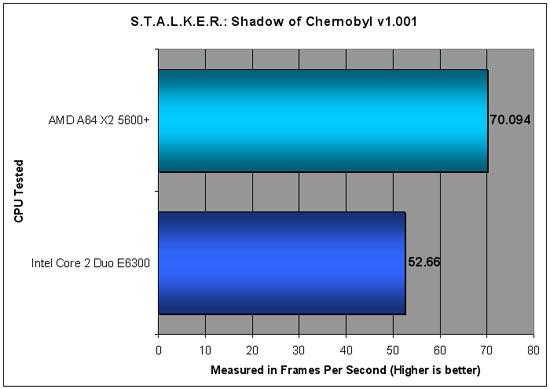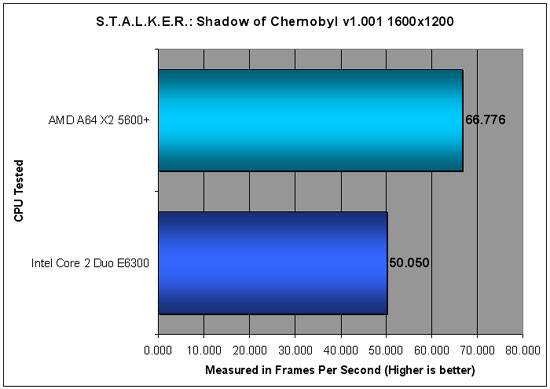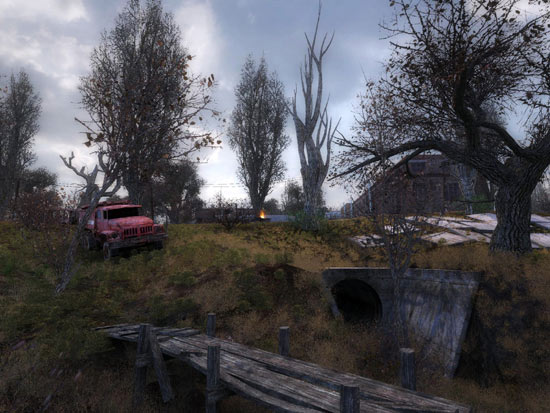$185 Gaming CPU’s: AMD 5600+ Versus Intel E6300
S.T.A.L.K.E.R.
S.T.A.L.K.E.R.: Shadow of Chernobyl
S.T.A.L.K.E.R.: Shadow of Chernobyl uses the ‘X-ray Engine’ to power the graphics. It is a DirectX 8/9 Shader Model 3.0 graphics engine. Up to a million polygons can be on-screen at any one time, which makes it one of the more impressive engines on the market today. The engine features HDR rendering, parallax and normal mapping, soft shadows, widescreen support, weather effects and day/night cycles. As with other engines that utilize deferred shading (such as Unreal Engine 3 and CryENGINE2), the X-ray Engine does not support anti-aliasing with dynamic lighting enabled. However, a “fake” form of anti-aliasing can be enabled with the static lighting option; this format utilizes a technique to blur the image to give the false impression of anti-aliasing. The game takes place in a thirty square kilometer area, and both the outside and inside of this area is rendered to the same amount of detail.

At the default 1024×768 game resolution we found that S.T.A.L.K.E.R.: Shadow of Chernobyl was more than playable on both processors, but the 2.8GHz 5600+ AM2 processor led by nearly 18 frames per second. The Intel Core 2 Duo E6300 was able to keep the frame rates well above 30fps, but offered 25% less frames per second.

Moving along to a resolution of 1600×1200 we see both processors taking a slight performance hit, but it all honesty it’s not as big as we expected. The Intel Core 2 Duo processor E6300 and AMD Athlon 64 X2 5600+ both took more than a 2FPS performance hit, which leads us to believe that the frame rate is limited more by the processor than the video card in this situation.


Comments are closed.